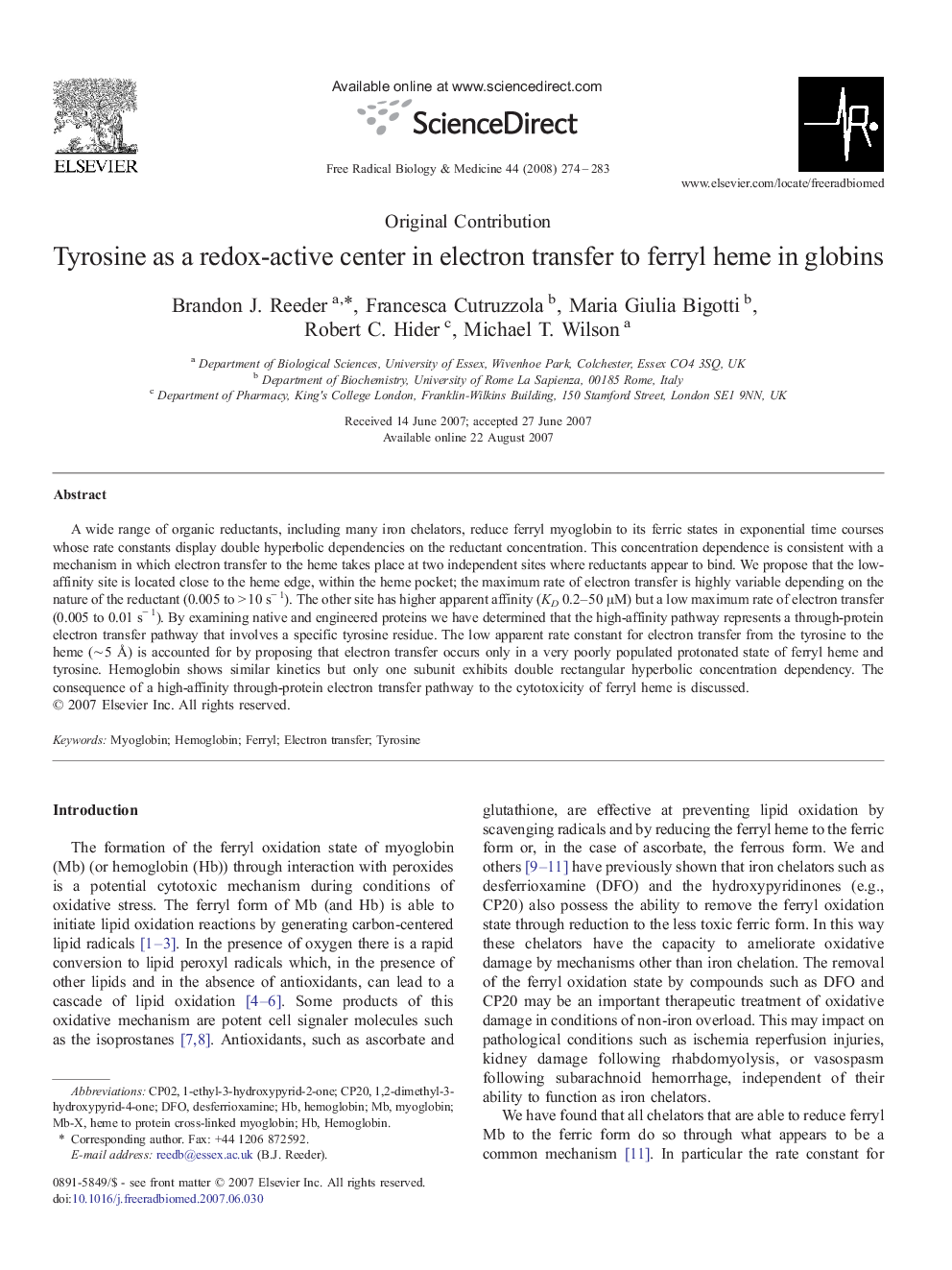| Article ID | Journal | Published Year | Pages | File Type |
|---|---|---|---|---|
| 1911107 | Free Radical Biology and Medicine | 2008 | 10 Pages |
A wide range of organic reductants, including many iron chelators, reduce ferryl myoglobin to its ferric states in exponential time courses whose rate constants display double hyperbolic dependencies on the reductant concentration. This concentration dependence is consistent with a mechanism in which electron transfer to the heme takes place at two independent sites where reductants appear to bind. We propose that the low-affinity site is located close to the heme edge, within the heme pocket; the maximum rate of electron transfer is highly variable depending on the nature of the reductant (0.005 to > 10 s− 1). The other site has higher apparent affinity (KD 0.2–50 μM) but a low maximum rate of electron transfer (0.005 to 0.01 s− 1). By examining native and engineered proteins we have determined that the high-affinity pathway represents a through-protein electron transfer pathway that involves a specific tyrosine residue. The low apparent rate constant for electron transfer from the tyrosine to the heme (∼ 5 Å) is accounted for by proposing that electron transfer occurs only in a very poorly populated protonated state of ferryl heme and tyrosine. Hemoglobin shows similar kinetics but only one subunit exhibits double rectangular hyperbolic concentration dependency. The consequence of a high-affinity through-protein electron transfer pathway to the cytotoxicity of ferryl heme is discussed.
